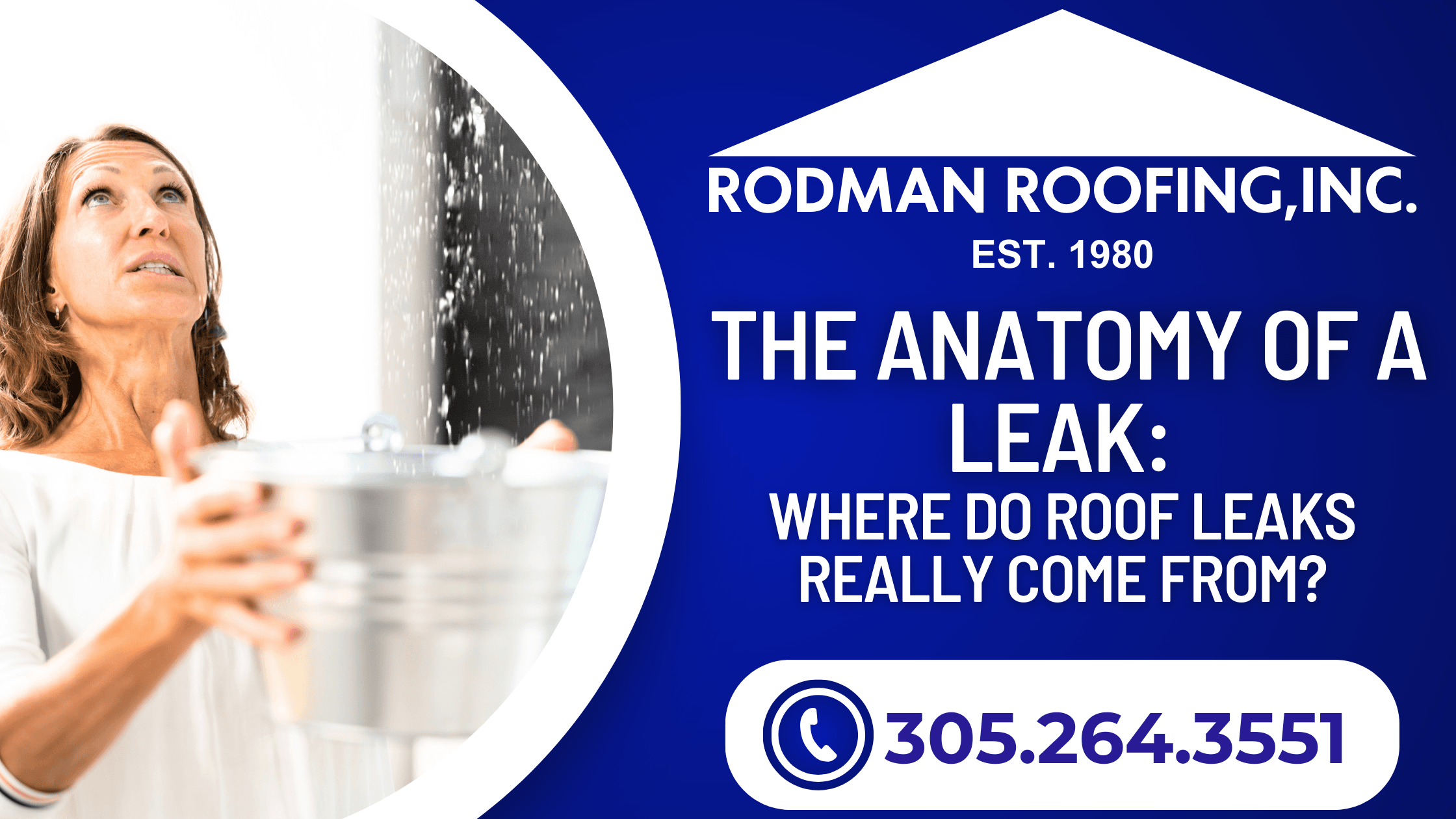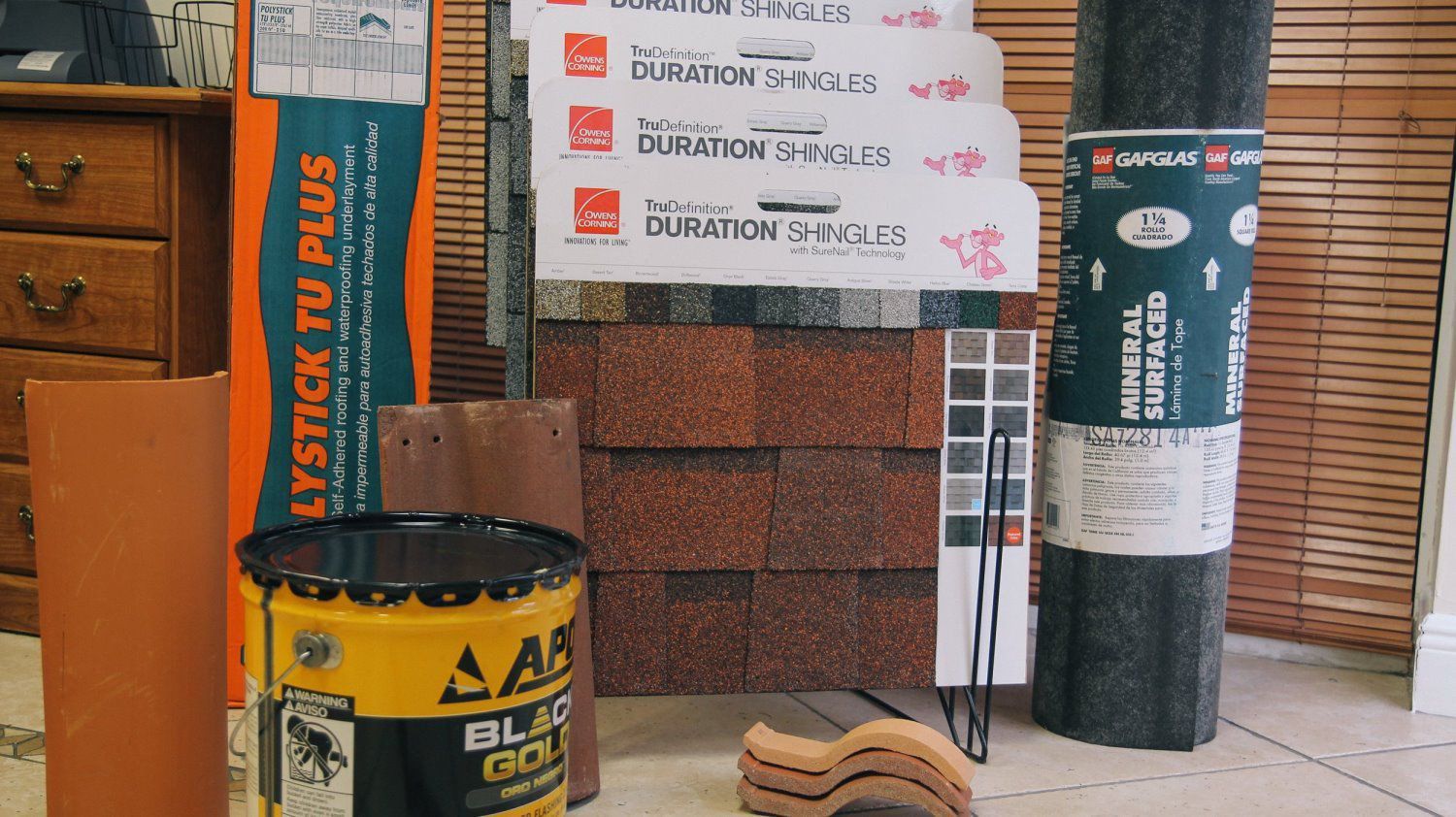
Hey Miami homeowners! When you discover a water stain on your ceiling or feel a dreaded drip, your first thought is probably, "There's a hole in my roof!" While that's sometimes the case, the real story behind a roof leak is often much more subtle and complex. A leak is rarely just a simple puncture. Instead, it’s usually the result of a chain reaction, starting with a compromised component that you might not even notice.
At Rodman Roofing Miami, we know that finding the source of a leak is a precise art. It's often not directly above the water stain you see. Let's dissect the anatomy of a roof leak and uncover where they really come from.
1. Compromised Flashing: The First Point of Failure
Flashing is the thin metal material installed in vulnerable areas of your roof, such as around chimneys, skylights, vents, and where the roof meets a wall. Its job is to create a watertight barrier, directing water away from these critical junctures.
How it Leaks: Flashing can rust, crack, or become dislodged over time due to age, intense sun exposure, or storm winds. Improper installation is also a major culprit. When the flashing fails, water seeps into the smallest gap and travels along the roof decking or framing until it finds a way into your home. This is often a slow, hidden leak that causes significant damage before you ever see a drop.
2. Clogged Gutters: Creating a Water Dam
Your gutters are designed to channel rainwater away from your roof and home’s foundation. But when they get clogged with leaves, twigs, and other debris (a common occurrence with our year-round trees!), they can become a serious problem.
How it Leaks: A clogged gutter turns into a dam. During a heavy downpour, water has nowhere to go but up and back onto the roof. It can then seep under the shingles or tiles, saturating the underlayment and rotting the roof decking. This is especially problematic in our torrential Miami rains.
3. Poor Ventilation: The Silent Destroyer
Proper attic ventilation is non-negotiable in a humid climate like ours. A well-ventilated attic allows hot, moist air to escape, preventing a host of internal problems that can lead to external leaks.
How it Leaks: Without adequate airflow (from a balanced system of soffit and ridge vents), hot, humid air gets trapped in your attic. This leads to condensation, which can saturate the wood of your roof deck. This prolonged exposure to moisture weakens the wood, causing it to rot and lose its integrity, making it much more susceptible to a leak. It’s a slow-moving problem that can compromise the entire structure of your roof from the inside out.
4. Damaged Shingles or Tiles: The Broken Shield
While a missing shingle is an obvious red flag, a leak can originate from a seemingly intact shingle or tile.
How it Leaks: Intense UV rays and thermal stress can cause hairline cracks or blistering on a shingle's surface, which aren't always visible from the ground. Similarly, a tile can crack from an impact, or its seal can fail. These small imperfections become a direct entry point for water, which then works its way through the underlayment. The water can travel a significant distance before it finally pools and drips into your home.
Don't Let a Small Problem Become a Major Disaster
The key takeaway is that most leaks are not instantaneous. They are the result of neglected maintenance or subtle failures. Trying to find and fix these hidden issues on your own is like searching for a needle in a haystack—while blindfolded! You might fix the symptom (the drip), but you'll miss the real problem, which will only get worse.
The best way to protect your investment is with a professional inspection. At Rodman Roofing, we are experts at diagnosing the true cause of a leak and providing a lasting solution. We'll identify and address these hidden vulnerabilities, ensuring your home is safe and dry.
Ready to get to the root of your roofing problem? Contact Rodman Roofing today for a free, no-obligation roof inspection and let us help you protect your home!
